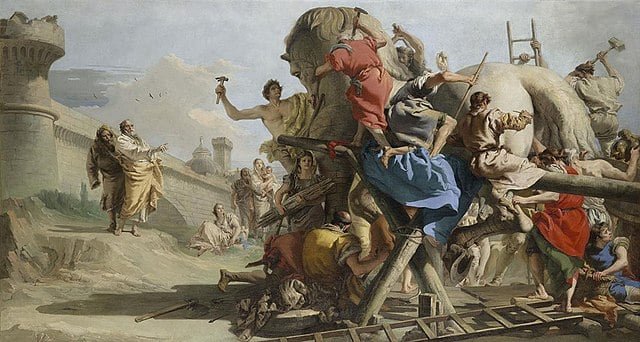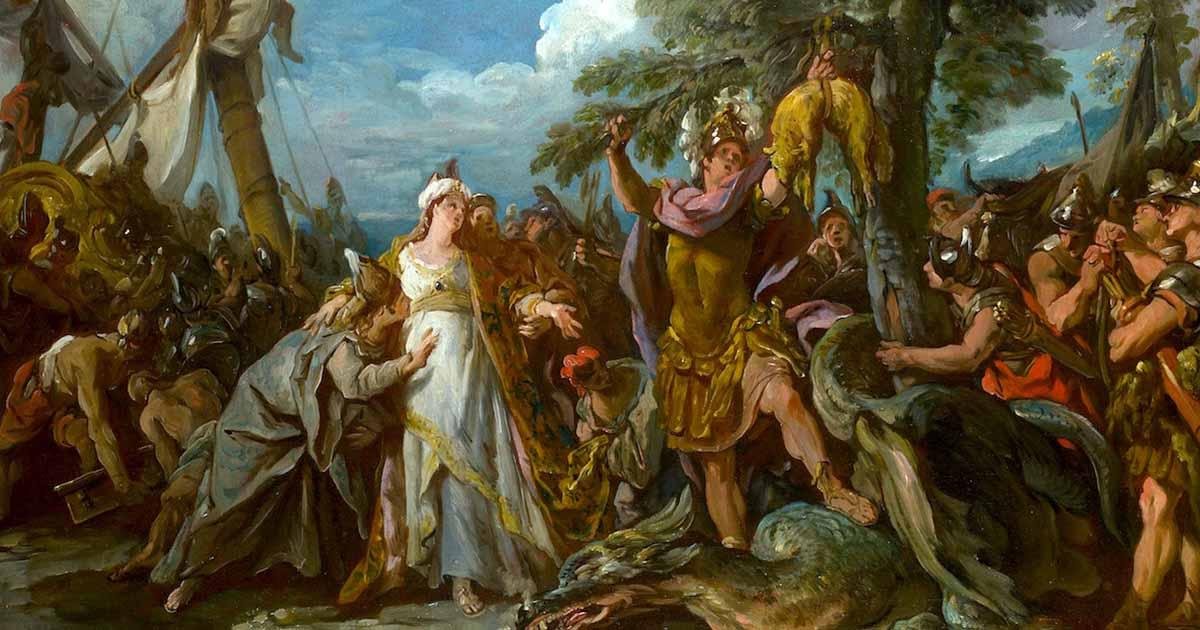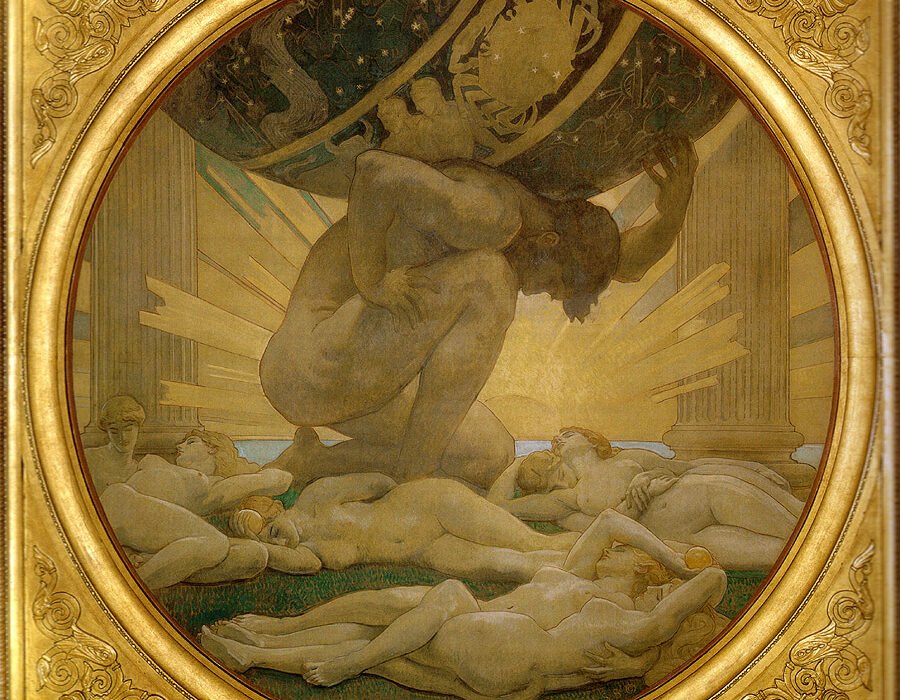Among the shadowed corridors of Greek mythology, where gods walk disguised as mortals and heroes rise to face the impossible, there stands a creature both terrifying and tragic—the Minotaur. Born from a divine curse and condemned to eternal hunger, the Minotaur was neither wholly man nor wholly beast. It was a living paradox, a reminder of the dangerous intersection between human desire and divine will.
The Minotaur, with the body of a man and the head of a bull, is one of mythology’s most enduring figures. It embodies the fear of the unknown, the shame of forbidden acts, and the eternal struggle between civilization and savagery. Its story, set on the island of Crete within the twisting corridors of the Labyrinth, is not just a tale of horror but a meditation on human nature, punishment, and redemption.
To understand the Minotaur is to enter the mythic heart of Greek imagination—where history and legend blur, where morality and monstrosity intertwine, and where the echoes of ancient rituals still reverberate in modern culture.
Crete: The Island of Myths and Kings
Before the Minotaur, there was Crete—the jewel of the Aegean. In ancient times, Crete was more than just an island; it was a powerful kingdom, home to the Minoan civilization, one of Europe’s earliest advanced societies. Its palaces, frescoes, and seafaring power dazzled the ancient world.
Central to Crete’s mythological identity was King Minos, the ruler whose name echoes in both history and legend. Minos was said to be the son of Zeus and Europa, giving him divine heritage. His reign symbolized order, authority, and power, but beneath it lay hubris and deception—forces that would eventually birth the Minotaur.
In many ways, Crete was the perfect stage for this myth. It was an island of labyrinthine palaces, sacred bulls, and complex rituals. Its real culture merged seamlessly with the myth of a beast imprisoned in twisting corridors beneath a king’s domain.
The Birth of the Beast
The Minotaur’s story begins with betrayal, lust, and divine retribution. Minos, eager to secure his throne, prayed to Poseidon, god of the sea, for a sign of his right to rule. Poseidon answered by sending a magnificent white bull from the sea—a creature of such beauty that it could only have been divine.
The god expected Minos to sacrifice the bull in gratitude. Instead, Minos, dazzled by its perfection, defied Poseidon. He kept the bull for himself, substituting another animal for the sacrifice.
Angered by this insult, Poseidon devised a punishment not aimed directly at Minos but at his household. He cursed Minos’s wife, Queen Pasiphaë, with an unnatural desire for the bull. Unable to resist, Pasiphaë enlisted the aid of the master craftsman Daedalus, who built a wooden cow in which she concealed herself. Through this grotesque union, the Minotaur was conceived—a child of both man and beast, cursed from birth.
The Minotaur was no ordinary infant. As it grew, its monstrous nature became apparent. It had the powerful body of a man but the head of a bull, with insatiable hunger for human flesh. Ashamed and fearful, Minos sought to contain this horror, and once again turned to Daedalus for help.
The Labyrinth: Prison and Symbol
To imprison the Minotaur, Daedalus constructed the Labyrinth, a masterpiece of architecture so intricate that none who entered could ever find their way out. Its twisting corridors, dead ends, and deceptive passages mirrored the confusion and entrapment of the human soul.
The Labyrinth was more than a prison—it was a symbol. For Minos, it represented control over chaos, a way to hide shame within walls of stone. For the Greeks who told and retold the myth, it symbolized the dangers of unchecked desire, the complexity of fate, and the inescapability of death.
Deep within this dark maze, the Minotaur was confined, waiting for victims sent to satisfy its hunger.
Tribute and Terror
The Minotaur’s presence was not confined to Crete alone. Its existence became a curse upon other Greek lands, most notably Athens. According to legend, after Minos’s son Androgeos was killed in Athens, Minos demanded revenge. He waged war against the city until it agreed to a terrible condition: every nine years, Athens would send seven young men and seven young women to Crete, where they would be thrown into the Labyrinth as sacrifices to the Minotaur.
For Athens, this was humiliation. For the youths, it was a death sentence. To walk into the Labyrinth was to step into the jaws of death, knowing that the beast within was waiting, hungry and merciless.
The story of these tributes reveals the Minotaur not only as a monster but also as a political weapon. The terror of the creature extended Minos’s dominance, reminding Athens of its submission. Yet it also set the stage for one of Greek mythology’s most celebrated heroes to rise.
Theseus and the Hero’s Challenge
Every monster in Greek myth awaits a hero, and for the Minotaur, that hero was Theseus. Prince of Athens, Theseus volunteered to join the group of sacrificial youths, determined to end the cycle of terror once and for all.
When Theseus arrived in Crete, fate intervened in the form of Ariadne, daughter of Minos and Pasiphaë. Struck by love for the hero, Ariadne resolved to help him. She gave him a ball of thread, advising him to unwind it as he entered the Labyrinth so he could retrace his steps after confronting the beast.
Inside the maze, Theseus faced the Minotaur in brutal combat. Accounts vary—some say he used only his strength, others that he wielded a sword given by Ariadne. But in every telling, the result was the same: Theseus slew the Minotaur, ending its reign of terror. With Ariadne’s thread, he escaped the twisting corridors, leading the other Athenian youths back to freedom.
The death of the Minotaur symbolized more than the triumph of one man over one beast. It represented the victory of civilization over barbarism, reason over chaos, and human courage over monstrous fear.
A Creature of Tragedy
Though often portrayed as a villain, the Minotaur’s story is tinged with tragedy. It was not a monster by choice but by birth—a victim of divine punishment and human betrayal. Born of Pasiphaë’s curse, imprisoned in a maze, and fed human flesh, the Minotaur lived a life defined by suffering and confinement.
Unlike other monsters of Greek mythology, such as the Hydra or Cerberus, the Minotaur was once half-human. Its bloodline tied it to kings and queens, even as its form condemned it to isolation. Its death was necessary for Athens’s freedom, yet it also marked the silencing of a creature that had never been given a chance to be anything other than monstrous.
In this sense, the Minotaur embodies the darker side of Greek myths—the way divine cruelty and human weakness create victims as much as villains.
Archaeology and the Minotaur’s Roots
Beyond myth, the Minotaur may have roots in real history and culture. The Minoan civilization of Crete, which flourished from around 2000 to 1450 BCE, worshipped bulls as sacred animals. Bull-leaping rituals, depicted in frescoes, show acrobats vaulting over charging bulls—spectacles that blended danger, religion, and sport.
Archaeologists have uncovered vast palace complexes, especially at Knossos, with countless rooms and winding corridors. To ancient Greek storytellers, these sprawling structures may have seemed like labyrinths themselves, inspiring the myth of Daedalus’s creation.
Thus, the Minotaur can be seen as a mythological reflection of Minoan culture: a fusion of bull-worship, ritual sacrifice, and architectural wonder, transformed by later Greek storytellers into a tale of monstrous birth and heroic triumph.
The Minotaur in Philosophy and Symbolism
Greek philosophers and later writers often interpreted the Minotaur’s story as an allegory. The Labyrinth symbolized life’s complexity, full of twists, dead ends, and uncertainty. The Minotaur represented the primal instincts and animalistic urges within humanity—forces that must be confronted and mastered by reason, symbolized by Theseus.
Ariadne’s thread, meanwhile, became a symbol of knowledge and guidance—the intellectual or spiritual path that helps one navigate life’s labyrinthine challenges.
In this way, the myth transcended its narrative roots, becoming a metaphor for human struggle: the fight to overcome inner monsters, to find one’s way through confusion, and to emerge victorious against overwhelming odds.
The Minotaur in Art and Literature
From antiquity to modern times, the Minotaur has fascinated artists, writers, and thinkers. Ancient vase paintings, mosaics, and sculptures depict the battle between Theseus and the beast. Roman poets retold the tale, often emphasizing Ariadne’s role and her abandonment by Theseus afterward.
In the modern era, the Minotaur reappears in unexpected places. Renaissance artists painted the creature as a symbol of passion and danger. In the 20th century, surrealists like Pablo Picasso used the Minotaur as a recurring figure, embodying desire, violence, and artistic power. Writers such as Jorge Luis Borges transformed the labyrinth into a metaphor for infinity, with the Minotaur as its eternal prisoner.
Even today, the image of the Minotaur persists in novels, films, and video games—a reminder that this myth still speaks to our fears and imaginations.
The Labyrinth Within Us
Why does the Minotaur endure? Perhaps because it represents something deeply human. We all carry labyrinths within us—complexities, contradictions, and struggles we cannot easily escape. And within those labyrinths dwell our own Minotaurs: fears, desires, traumas, and instincts that we must confront.
The story of Theseus teaches us that victory is possible, but not without courage, guidance, and sacrifice. The Minotaur’s fate, tragic as it is, reminds us of the consequences of pride, betrayal, and divine wrath.
In every retelling, the myth asks us to reflect: What monsters lurk in the dark corridors of our own lives? And do we have the strength, like Theseus, to face them?
The Legacy of the Minotaur
The Minotaur is more than just a monster slain by a hero. It is a symbol woven into the cultural and psychological fabric of humanity. It embodies the dangers of hubris, the consequences of broken promises, and the complexity of human nature.
Its story is not only about fear but also about hope—the hope that no matter how terrifying the labyrinth, there exists a way out, a thread to guide us, and the possibility of triumph over darkness.
The Minotaur still waits for us in the stories we tell, in the art we create, and in the struggles we endure. It waits at the center of the labyrinth, not as a relic of the past but as a timeless reminder that to be human is to face monsters—both real and imagined—and to seek the courage to overcome them.






